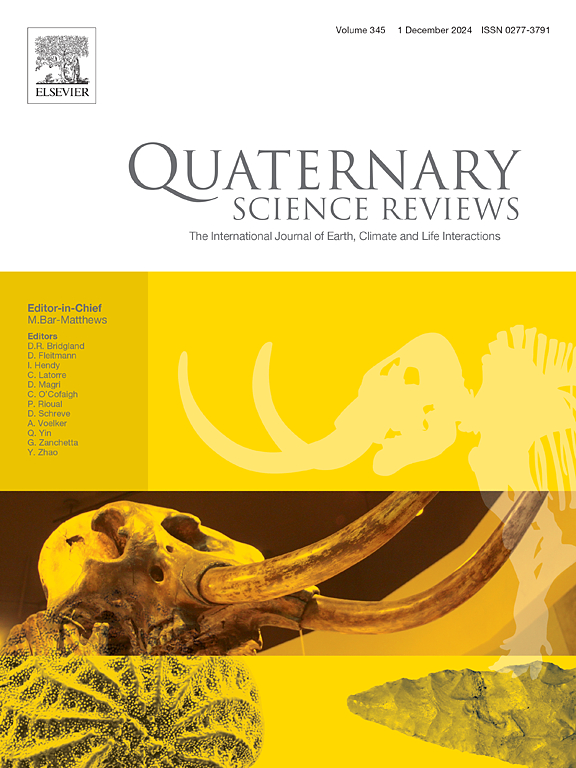A model of loess formation and atmospheric circulation regimes in the Azov region during the Middle and Late Pleistocene
IF 3.2
1区 地球科学
Q1 GEOGRAPHY, PHYSICAL
引用次数: 0
Abstract
A comparison of the grain-size data, geochemistry and mineralogy of the loess-palaeosol sequences, glacial and river deposits of the East European Plain made it possible to determine of the provenance, stages of sedimentary differentiation and loess formation in the Azov region. It was revealed that the protolith of the loess of the Chumbur Kosa section consisted of rocks of the Fennoscandian Shield and deposit Eastern European Platform. The main source of mineral dust was the glacial deposits of the northern East European Plain. Proximal alluvial deposits of the Don and Dnieper rivers were a minor source of dust. Using grain-size EMMA, evidence was found that during the maximum glaciation in the Middle Pleistocene, a blocking anticyclone could have formed above the glacier, preventing the active penetration of air masses from the Atlantic and Siberia. Within the anticyclone there were cold and dry conditions in which dust of glacial provenance was transported south by high-altitude regional winds. In MIS 2–3, the disappearance of the blocking anticyclone led to the formation of the modern atmospheric circulation regime in the south of the East European Plain, determined by the competition of the North Atlantic cyclone and the Siberian anticyclone. The resulting model expands the understanding of the formation mechanisms of loess in the East European Plain and the atmospheric circulation regimes in the immediate vicinity of ice sheets.

求助全文
约1分钟内获得全文
求助全文
来源期刊

Quaternary Science Reviews
地学-地球科学综合
CiteScore
7.50
自引率
15.00%
发文量
388
审稿时长
3 months
期刊介绍:
Quaternary Science Reviews caters for all aspects of Quaternary science, and includes, for example, geology, geomorphology, geography, archaeology, soil science, palaeobotany, palaeontology, palaeoclimatology and the full range of applicable dating methods. The dividing line between what constitutes the review paper and one which contains new original data is not easy to establish, so QSR also publishes papers with new data especially if these perform a review function. All the Quaternary sciences are changing rapidly and subject to re-evaluation as the pace of discovery quickens; thus the diverse but comprehensive role of Quaternary Science Reviews keeps readers abreast of the wider issues relating to new developments in the field.
 求助内容:
求助内容: 应助结果提醒方式:
应助结果提醒方式:


